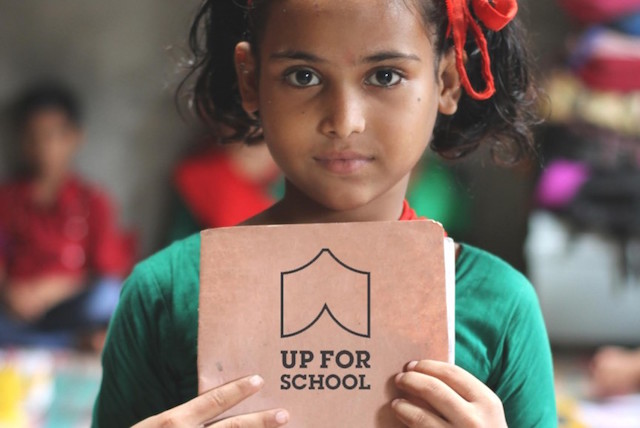By Kanya D’Almeida | IDN-InDepthNews Analysis
UNITED NATIONS (IDN) – By mid-2015, the number of young people between the ages of 10 and 24 stood at 1.8 billion, representing the largest youth population the world has ever seen.
A large portion of this demographic is based in the global South, according to the United Nations, with children and adolescents making up a majority of the combined populations of the world’s 48 least developed countries (LDCs).
But as various youth leaders pointed out at a recent UN summit convened by the United Nations Educational, Scientific and Cultural Organisation (UNESCO), young people today are confronted with a multitude of difficulties.
Conflicts, corruption and climate change represent just some of the challenges that young people face on a daily basis, said participants in the two-day conference on the role of Global Citizenship Education (GCED) in fostering youth peace builders, which took place on September 10-11.
Displacement, violence, unemployment and illiteracy also pose challenges to the younger generation, participants added, pointing to a need for a “radical” transformation of local, national and international structures to engage and involve youth at the highest levels of decision making and policy planning.
A new generation of youth leaders
Using GCED, a framework based on inclusivity, mutual respect and tolerance for all cultures, faiths and peoples developed to support the UN Secretary-General’s Global Education First Initiative (GEFI), a new generation of youth leaders hopes to make in-roads in the arenas of development, human rights, peace and security.
Given that young people around the world are disproportionately impacted by violence and conflict, they feel that youth participation is most urgently required in the latter field, which is also one of the three pillars of the United Nations.
Data from the Office of the Secretary-General’s Special Envoy on Youth suggests that youth comprise 40 percent of the roughly 1.5 billion people living in fragile and war-torn areas around the globe, while the most recent UN report on children in armed conflicts showed that kids are increasingly becoming casualties of war.
Ongoing political, economic and environmental crises, including protracted conflicts such as the ones in Syria, Afghanistan and Iraq, are also pushing hundreds of thousands of young people out of their homes; in 2011, 14 million youth had been forcibly displaced due to war and natural disasters.
A global study on homicide rates published by the UN Office on Drugs and Crime (UNODC) found males between the ages of 15 and 19 years to be most vulnerable to death by firearms, while young women and girls living in societies plagued by epidemics of armed violence are at “high risk” of being killed by their partners.
A full 43 percent of homicide victims globally are 15-29 years of age, while young males in the Americas account for one in every seven homicide victims worldwide.
Despite these realities, young people say they are seldom offered a seat at the table.
Addressing the gathering at the UN headquarters last month, Ahmad Alhendawi, Secretary-General Ban Ki-moon’s first-ever Envoy on Youth, deplored the fact that the realm of ‘peace and security’ has traditionally been an exclusive club open only to experts, diplomats and politicians.
“There are many fires burning around the world and young people are being burned in those fires,” he said, adding that people affected by war should be part of discussions to bring about peace.
Recalling the recent Global Forum on Youth, Peace and Security in Jordan, Alhendawi called attention to the action points set out in the Amman Youth Declaration – an ambitious document that incorporated the views of some 11,000 young people around the world.
Establishing a global policy framework
Chief among its recommendations to the international community is the establishment of a global policy framework addressing the specific “needs, assets, potential and diverse identities of youth in conflict and post-conflict scenarios by 2017”.
The declaration also calls on the Security Council to urgently pass a resolution on Youth, Peace and Security, while highlighting other areas of particular concern to young people including gender equality and socio-economic empowerment.
Indeed, young women face almost double the burden as their male counterparts, since they are also more prone to gender-based violence and risks relating to reproductive health.
According to the Women’s Refugee Commission, all 51 countries experiencing some form of conflict since 1986 also reported high levels of sexual violence against adolescent girls.
The UN says that complications arising during pregnancy and childbirth represent the “second leading killer of adolescent girls in developing countries”, amounting to tens of thousands of deaths annually.
Each year, 200,000 girls under the age of 18 give birth every day in developing countries.
And if currents trends continue, a staggering 15 million girls in the 15-19 age bracket will endure female genital mutilation between now and the year 2030.
Young people also continue to be disproportionately excluded from the workforce, a survey released on October 13 found.
The report, ‘Toward Solutions for Youth Employment’, revealed that youth comprise 40 percent of unemployed people worldwide, and are four times more likely than their adult counterparts to be out of work.
But youth leaders at the summit warned against seeing young people only as victims of their circumstances.
“There is no lack of ordinary young people doing extraordinary things,” said Chernor Bah, Chairman of GEFI’s Youth Advocacy Group (YAG) – from Sierra Leone – during a panel discussion. “The [problem] is social and institutional structures including [the United Nations] that are created almost deliberately to exclude young people and keep our stories out.”
Up for School
Reiterating the ripple effect that Malala Yousafzai’s courageous stand had on the world, Bah pointed out the success of such initiatives as #UpForSchool, a movement that currently boasts 500 youth ambassadors in over 86 countries and has garnered over six million signatures for its petition aimed at getting the world’s 56 million out-of-school children back into their classrooms.
“We need a radical paradigm shift, so that we embrace young people and collectively celebrate acts of courage,” he stressed, adding that every single day millions of young people like Malala are standing up for their rights, though their actions often go unnoticed.
Underpinning every effort to bring young people into the nexus of policy-making is the concept of Global Citizenship Education (GCED), which aims to foster a new kind of literacy for the 21st century.
Deputy Permanent Representative of the Republic of Korea Ambassador Hahn Choong Hee said GCED, currently enshrined in the new Sustainable Development Agenda, should be viewed as a vehicle for thinking about our relationships with one another and with the planet.
For young people today living through political, economic and technological revolutions, the likes of which the world has never seen before, to say nothing of the impending threat of catastrophic climate change, GCED is not an option but an imperative. [IDN-InDepthNews – 15 October 2015]
Photos top down: Up for School (www.aworldatschool.org); Ahmad Alhendawi, United Nations Secretary-General’s Envoy on Youth (www.un.org/youthenvoy); Chernor Bah, Chairman of GEFI’s Youth Advocacy Group (www. sierraexpressmedia.com).


